Is it a bird? Is it an SUV? No, it’s a supermini: Toyota Aygo X Exclusive
We should applaud and cherish cars like this, writes Sean O’Grady. They are part of a dying breed. Small may no longer be beautiful, but there is still an answer for those who desire more traditional urban transport

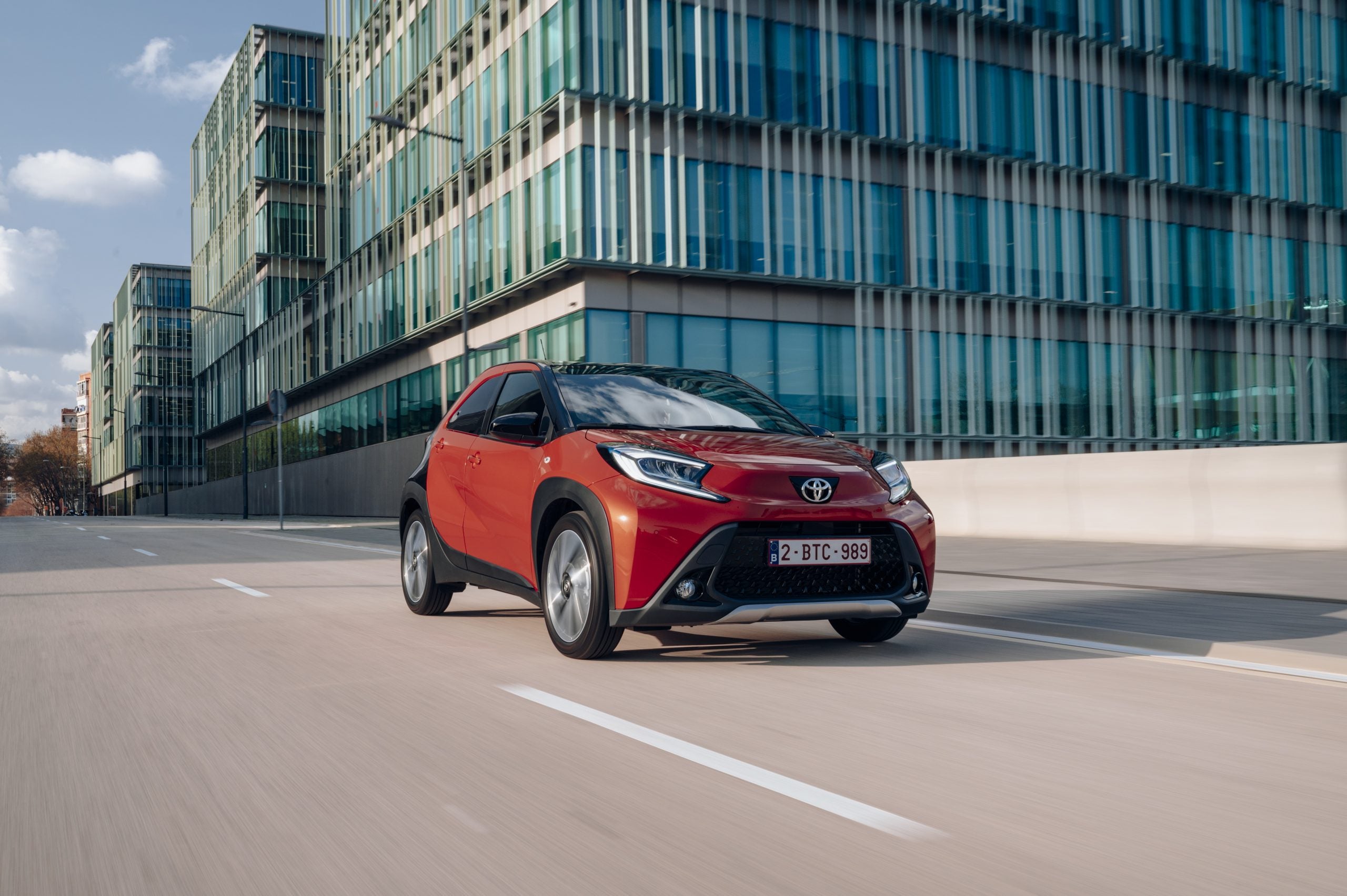
Your support helps us to tell the story
From reproductive rights to climate change to Big Tech, The Independent is on the ground when the story is developing. Whether it's investigating the financials of Elon Musk's pro-Trump PAC or producing our latest documentary, 'The A Word', which shines a light on the American women fighting for reproductive rights, we know how important it is to parse out the facts from the messaging.
At such a critical moment in US history, we need reporters on the ground. Your donation allows us to keep sending journalists to speak to both sides of the story.
The Independent is trusted by Americans across the entire political spectrum. And unlike many other quality news outlets, we choose not to lock Americans out of our reporting and analysis with paywalls. We believe quality journalism should be available to everyone, paid for by those who can afford it.
Your support makes all the difference.Though Toyota’s pugnacious little Aygo X looks all cutting-edge and funky, it is in fact, in conception, rather old school. Get past the zigzag styling and bold two-tone paint job, and what you have before you is a rather traditional city car or supermini, with the kind of spec you’d have got a generation or so ago.
There’s the five-speed manual gearbox. Some painted steel interior panels. A window at the back that pops out. A rear hatch that is actually no more than an opening window, albeit smartly finished in opaque black. Under the bonnet we find a three-cylinder, one litre engine – with not even a mild hybrid boost, let alone electric propulsion. There’s room for four only, and that’s at a push, and there’s not much room in the boot.
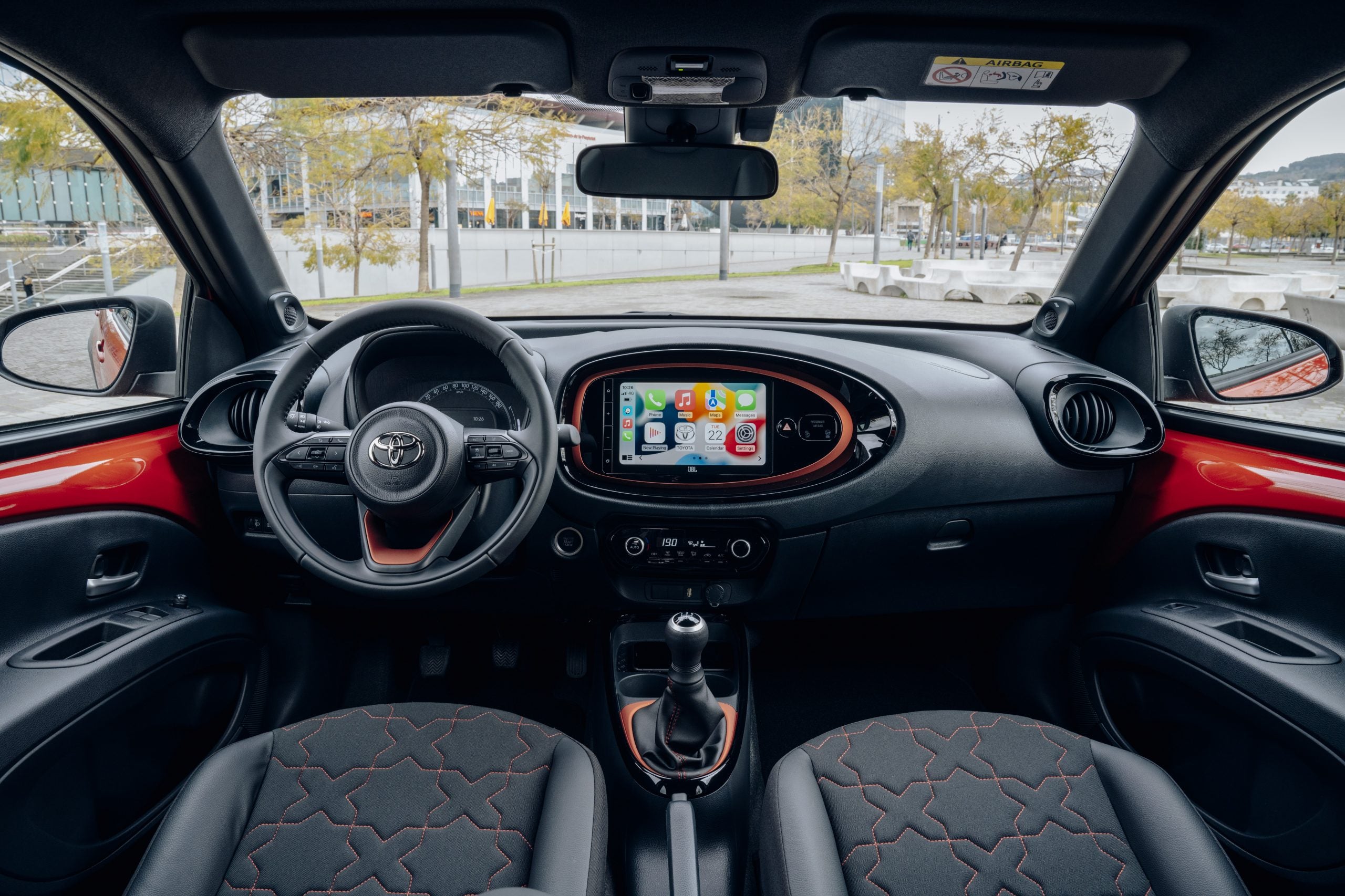
As for performance, well it might feel agile and lively enough on the move, and happily so, I was nonetheless a little surprised to see the spec sheet which rates the Aygo X at a top speed of 98mph, and a sprint from rest to 60mph in a tedious 14.9 seconds. It’s not a particularly “torquey”, engine, so you have to rev it and get busy with the gear stick to make adequate progress on the motorway.
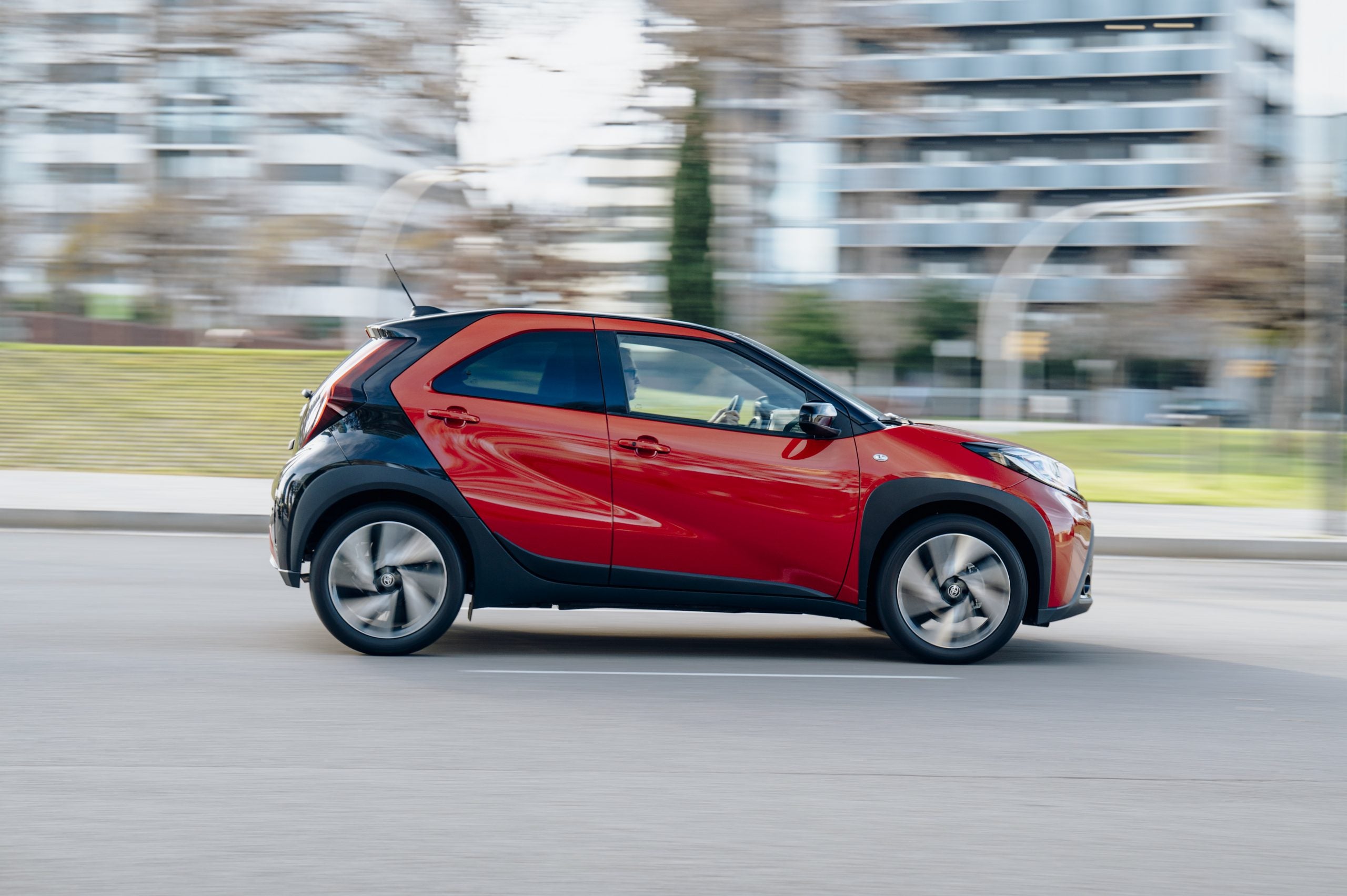
All of which is fine, because if you’re prepared to put up with some minor inconveniences and adjust expectations you find the Aygo X can just about acquit itself not only as economical and handily-sized urban transport, but also for some longer hauls.
Partly to test the idea that a modern city car is able enough for a longer run, I managed to clock up about 1,000 miles in my week with the car, and with few complaints. The seats were OK, and as sole occupant what there was in the way of acceleration was readily available.
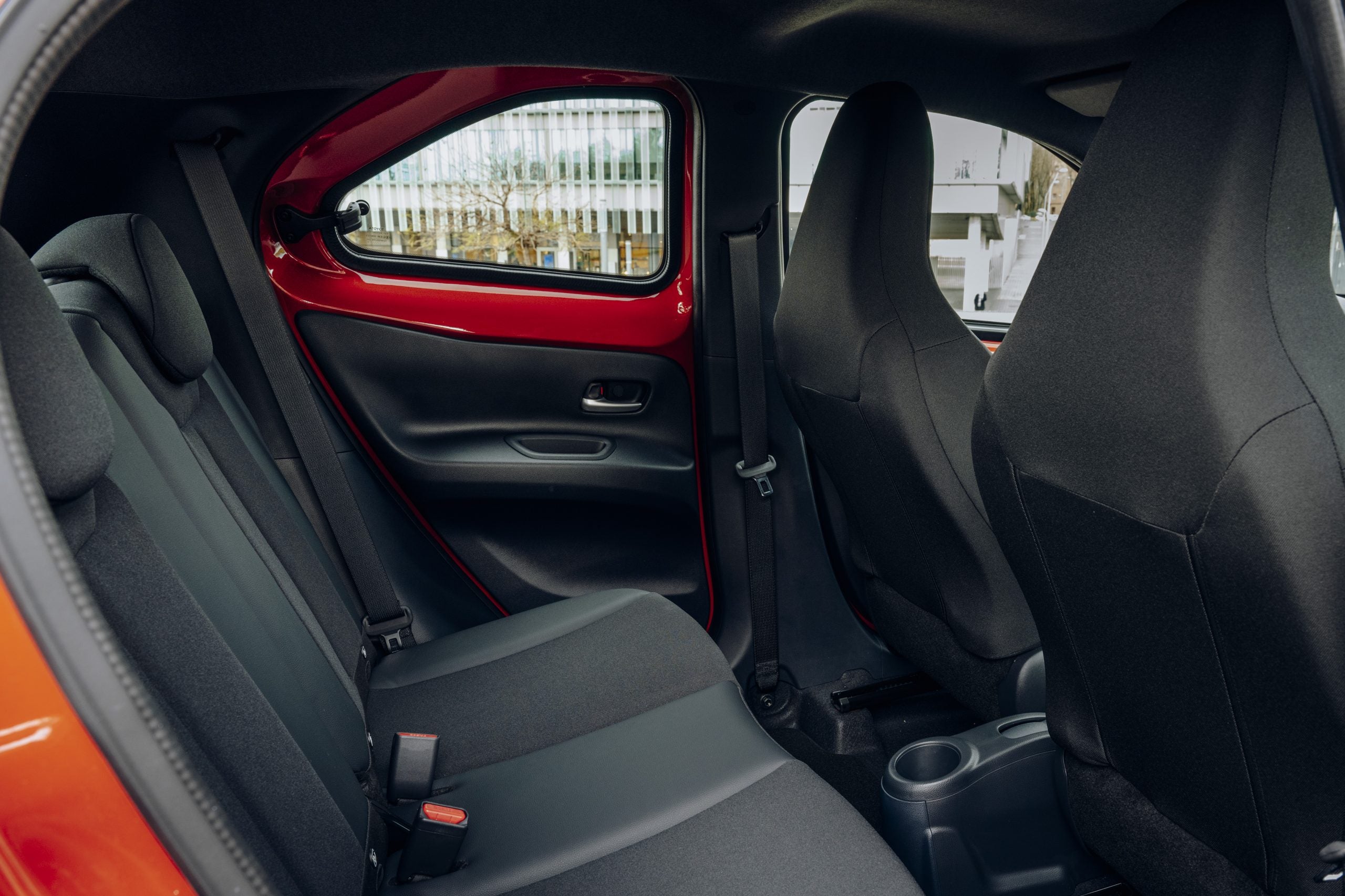
The better specced versions of the Aygo X are fitted with adaptive cruise control, including lane assist, and that makes a big difference to its long-distance capability. It works fine with the manual box, too. The bonus is 70mph plus on a run, with remarkably little discomfort. Again, the “Exclusive” trim levels comes with a very good stereo, which overcomes the noisy mess at high speed.
The ride can be a bit jittery on those stretches of concrete surface you sometimes still encounter, and I found the heater fairly poor by modern standards – but if you crank it high enough you can get reasonably snug on a cold night.
THE SPEC
Toyota Aygo X Exclusive
Price: £18,275 (as tested; range from £16,130)
Engine capacity: 1.0l petrol, 3-cyl, 5sp manual (auto optional)
Power (hp): 71
Top speed (mph): 98
0-60 (seconds): 14.9
Fuel economy (mpg): 56.5
CO2 emissions (WLTP, g/km): 110
The X version of the Aygo, I should explain, is really just a cosmetic job on the standard Aygo city car, with a slightly raised ride height and some chunky cladding around the bodywork. Obviously, it won’t go properly off road (front-wheel drive only), but, in my experience, a muddy barnyard is easily navigable.
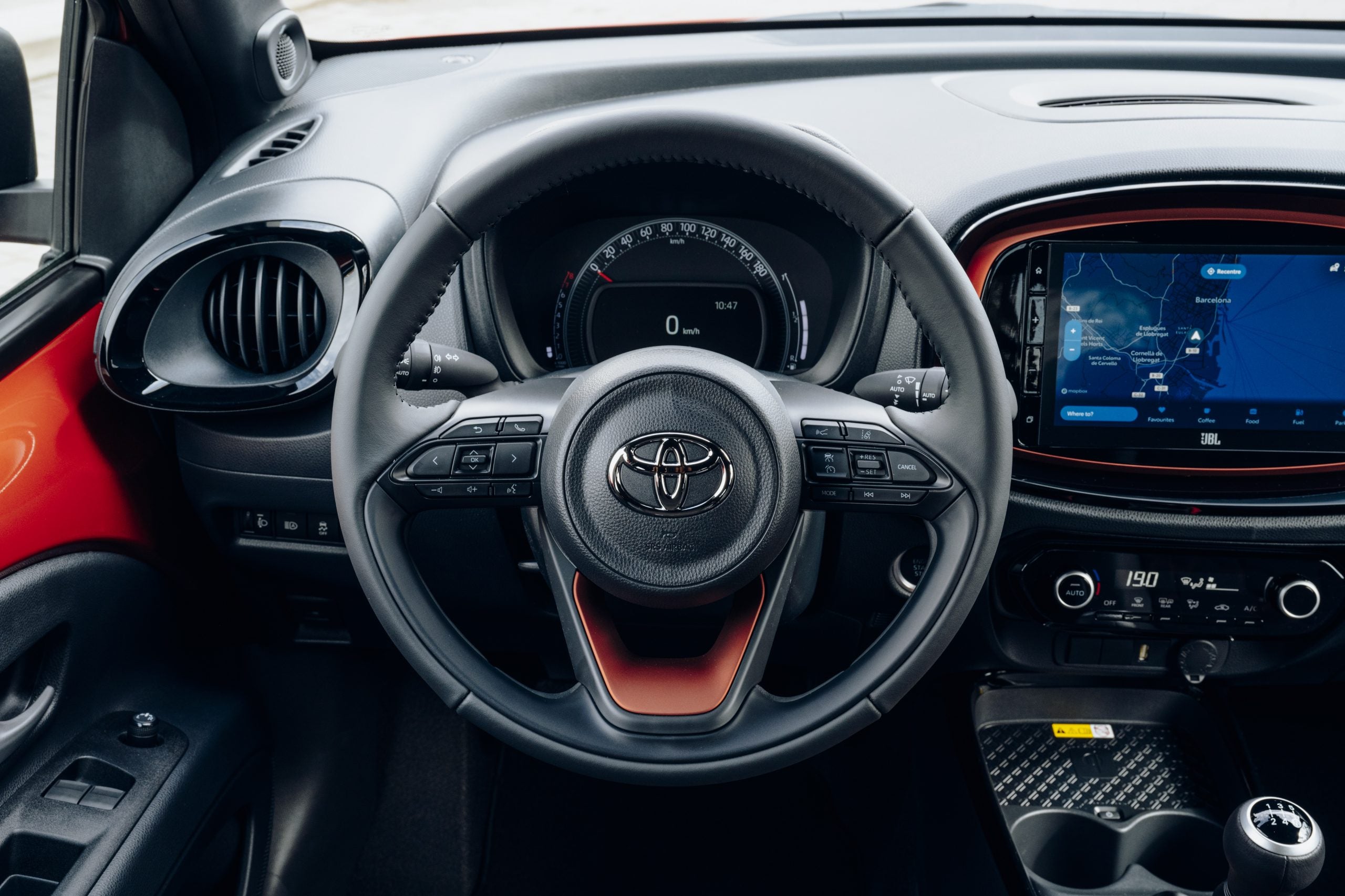
It’s often unfair (if amusing) to review a car by standards that it was never designed to meet (like getting a wardrobe into the back of a Lamborghini Huracan, or trying to break the Nurburgring record in a Transit van, but with city cars we know that they have to have the endurance to tackle the occasional longer range assignment. The Aygo passed that test. If you want more fun, you can opt for one with a full-length canvas roof, a sort of convertible.
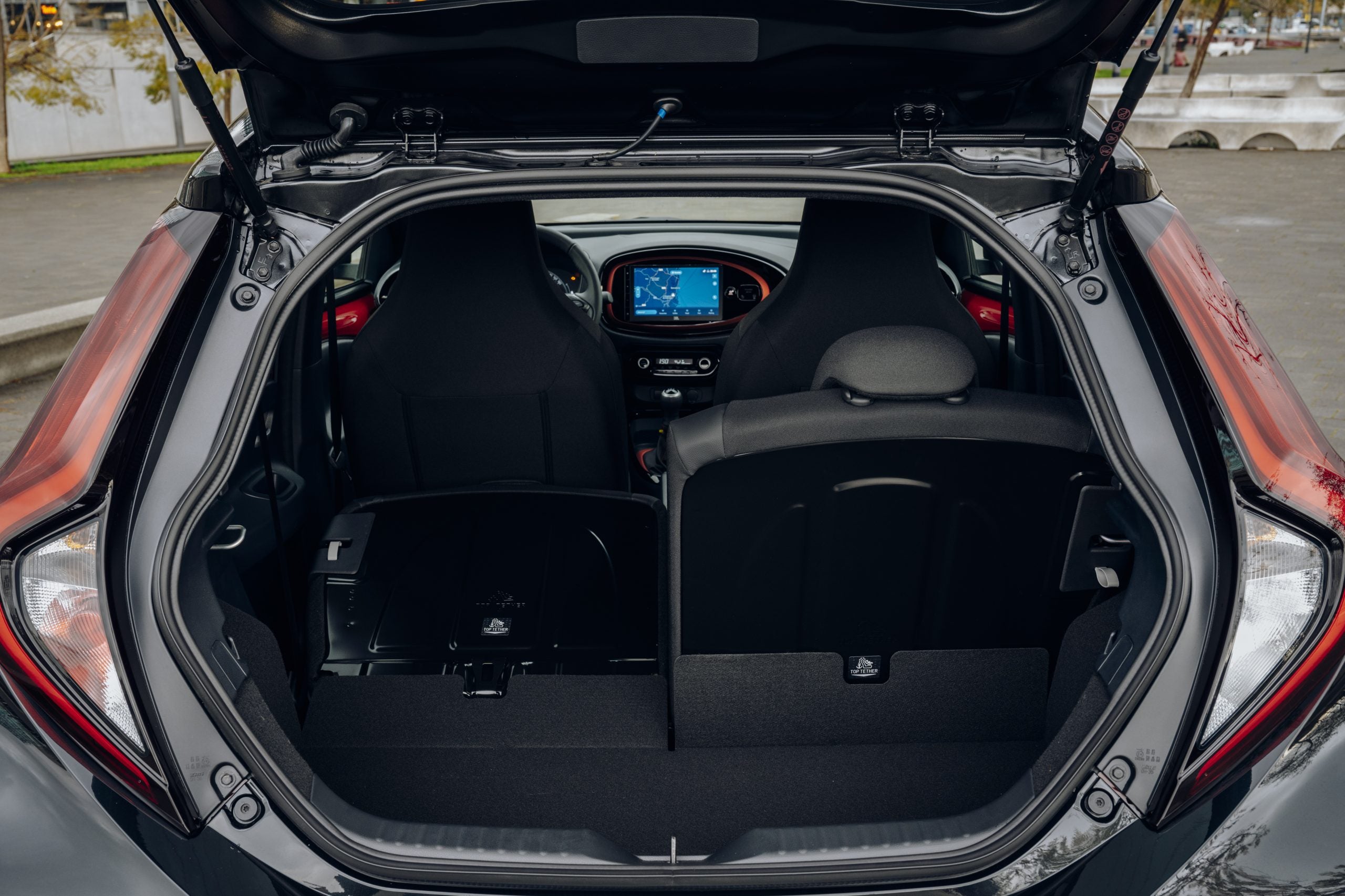
Cars like this are sadly dying out. For example, you might remember that the early Aygo models had near-identical Citroen C1 and Peugeot 108 siblings, and virtually every mainstream manufacturer had some offering in the field. But, as the old saying goes, mini cars make mini profits, and safety demands, fashion and consumer expectations for space have pushed up car “inflation”, so that a medium-sized near two-tonne SUV is nowadays considered “compact” and ideal urban transport.
Great models such as the original Ford Ka (aside from the endemic corrosion), the Smart car, and Renault Twingo have been and gone. Battery electric cars are also better suited to a bigger “footprint” and higher stance (the 28mph Citroen Ami quadricycle being an exception). “Small” is no longer beautiful.
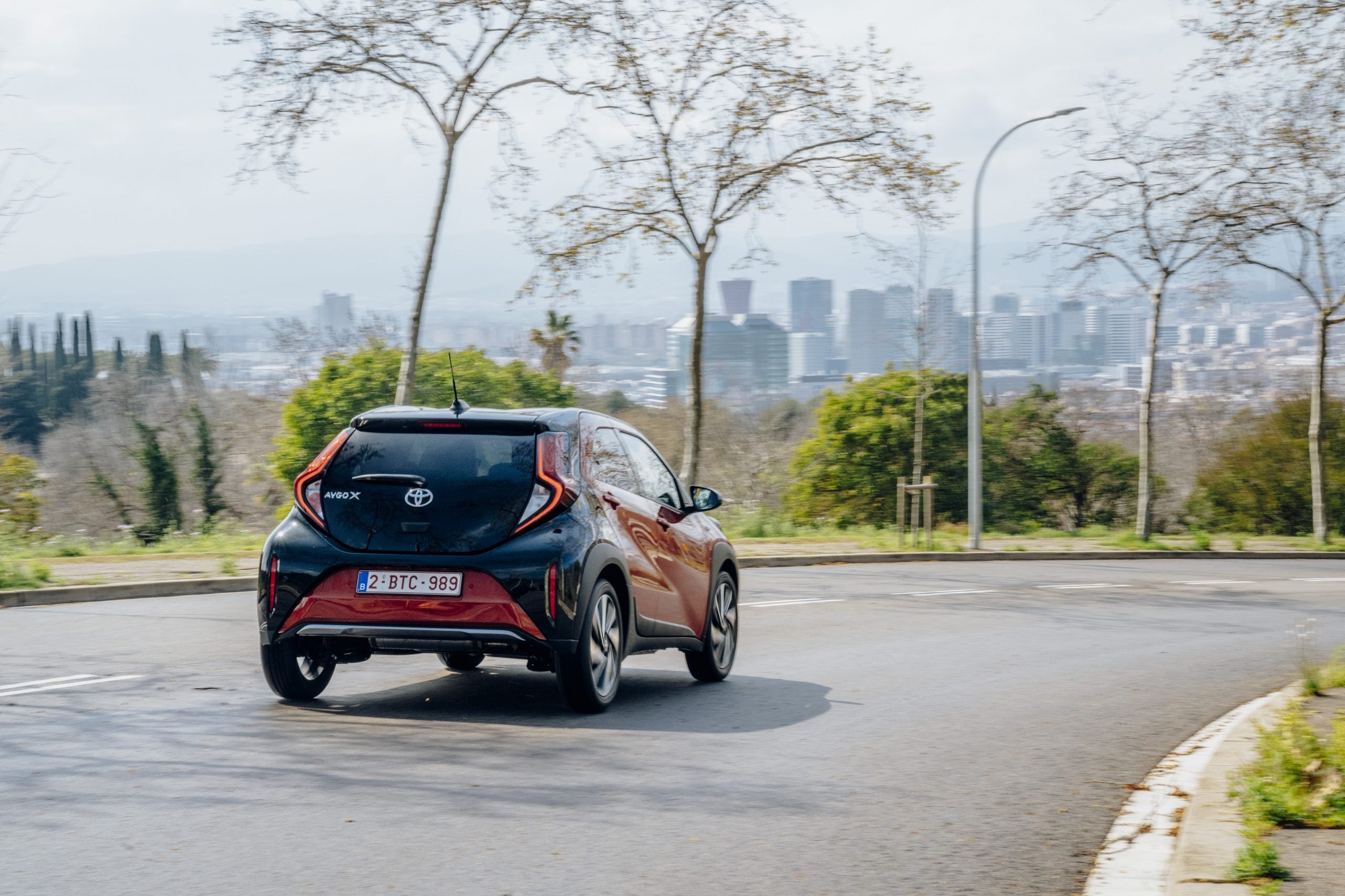
So we should applaud and cherish the Aygo, which probably only makes a financial case for itself because it is based on the bigger high-volume Yaris. The Aygo is a little expensive when set against its relatively few competitors – Fiat 500 hybrid, Hyundai i10, VW Up! and Kia Picanto (soon to be revised) – but it is well-made and, if you get it looked after by a usually conscientious Toyota dealer you can enjoy an effective warranty of 10 years or 100,000 trouble-free and rot-free miles.
And, for those brought up on Fiat 127s and Vauxhall Vivas, that is something that is definitely not old school.
Join our commenting forum
Join thought-provoking conversations, follow other Independent readers and see their replies
Comments